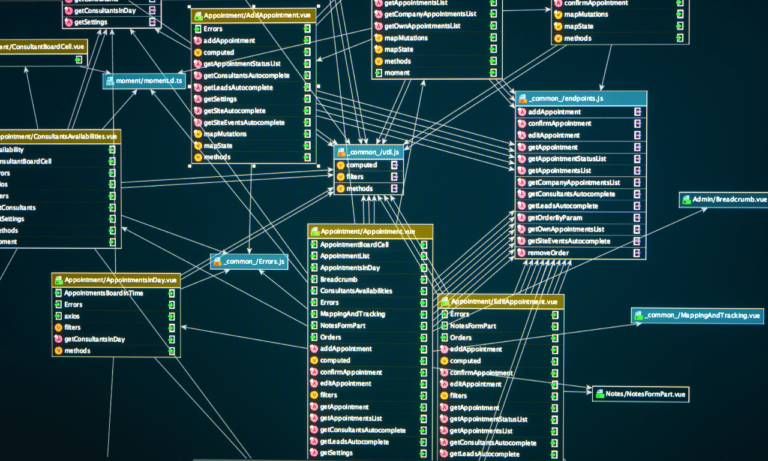Phone:
(+65)8319-0742
The realm of education constantly evolves, introducing innovative strategies to bolster student engagement and foster a deeper understanding of the material at hand. Among such strategies is Scaffolded Inquiry, a pedagogical approach that breaks learning into manageable segments. Each stage is designed to provide the foundational support necessary for students as they navigate new concepts, ensuring that each learner moves forward with confidence.
Grasping the concept of the Zone of Proximal Development (ZPD) is imperative when educators implement Scaffolded Inquiry, enabling them to craft lessons and activities that hit the sweet spot of challenge and attainability for their students. It’s this attuned instruction that not only engages but also helps students build a solid conceptual framework they can continue to expand upon.
Key Takeaways
- Scaffolded Inquiry optimizes education by structuring learning into support-rich segments.
- Utilizing student engagement tactics within this framework helps cultivate a deeper understanding.
- Understanding studentsâ ZPD is crucial for effectively tailoring Scaffolded Inquiry efforts.
- Think-alouds, structured discussions, and real-life relatability are key components of Scaffolded Inquiry.
- The approach acts as a supportive bridge towards differentiated instruction, accommodating varied levels of learner readiness.
The Essence of Scaffolded Inquiry in Educational Settings
As educational paradigms shift towards more dynamic and responsive methods, the adoption of student-centered learning has become pivotal. Within this context, Scaffolded Inquiry emerges as a critical approach that aligns with the principles of educational scaffolding, encouraging an environment where inquiry-based learning thrives. This approach equips educators with the tools to construct an interactive scaffolding framework that not only supports but also challenges students.
Defining Scaffolded Inquiry in the Classroom
Scaffolded Inquiry is not simply a teaching tactic but a structured journey through which students gain knowledge. It is characterized by the intentional design of learning sequences and activities that build upon one another to develop deeper understanding and skills. Teachers coordinate various instructional strategies to guide students, from previewing texts to engaging in rich discussions about critical vocabulary and breaking down complex information into digestible pieces.
Comparing Scaffolded Inquiry and Differentiation
The premise of Scaffolded Inquiry is distinct from simple differentiation. While differentiation adjusts instruction to meet diverse learners’ needs, Scaffolded Inquiry establishes a foundational framework that benefits all students. It emphasizes initial collective understanding before attending to the nuanced learning trajectories of individual students. This distinction highlights the importance of a shared starting line from which every learner progresses.
The Role of Educator in Scaffolded Inquiry
Central to the success of Scaffolded Inquiry is the educatorâs ability to discern the varied needs of their students. The proactive role of the teacher encompasses adapting instructional methods to both collective and individual zones of proximal development (ZPD). Teachers become facilitators and co-constructors of knowledge, employing techniques such as modeling, facilitating fishbowl discussions, and illustrating success criteria through explicit examples, solidifying the journey of discovery for each student.
- Modeling Tasks: Demonstrating techniques and processes explicitly.
- Fishbowl Activities: Observing and reflecting upon peer interactions for deeper insights.
- Success Criteria Charts: Providing clear visual references to aid student self-assessment and understanding.
The harmonious integration of Scaffolded Inquiry with student-centered learning practices enables a learning experience that is both meaningful and empowering, fostering not only content mastery but also the development of critical thinking and problem-solving skills. In leveraging inquiry-based learning, educators create a nexus of growth and discovery that is catered to the progression of each learner within an interactive scaffolding environment.
Strategies to Implement Scaffolded Learning Experiences

Implementing a scaffolded learning framework within an educational environment requires an understanding of various inquiry learning strategies and the creation of structured yet flexible scaffolded learning experiences that cater to the evolving needs of students. Below, several key strategies are detailed to guide educators in building a supportive learning atmosphere.
One initial approach involves the integration of graphic organizers, which serve both as visual aids and as tools for students to organize their thoughts and information. The use of graphic organizers exemplifies an inquiry learning strategy that promotes clarity and retention of complex concepts. Another technique that falls under the scaffolded learning framework is the think-pair-share method, a structured discussion that enhances verbal articulation among students and encourages peer-to-peer learning.
Pre-teaching vocabulary in engaging contexts also proves invaluable. By introducing terms and concepts prior to deep dives into subject matter, educators lay a foundational vocabulary, which simplifies the understanding of subsequent material. This proactive approach is central to cultivating scaffolded learning experiences that resonate with students across various learning paces and styles.
To further ensure comprehension and encourage reflection, educators can employ the following scaffolded learning framework strategies:
- Strategic questioning to assess and reinforce student understanding
- Pauses for reflection to process and internalize information
- Check-ins and feedback sessions to track progress and adapt strategies
The table below outlines examples of inquiry learning strategies and their applications within a scaffolded learning framework.
| Strategy | Function | Application in Scaffolded Learning |
|---|---|---|
| Graphic Organizers | Visual Representation | Clarifies complex ideas by mapping out relationships visually |
| Think-Pair-Share | Collaborative Discussion | Encourages students to articulate thoughts verbally with peers |
| Pre-Teaching Vocabulary | Foundational Understanding | Equips students with necessary terms before engaging with new content |
| Strategic Questioning | Comprehension Check | Facilitates real-time assessment of student understanding |
| Reflection Pauses | Information Processing | Allows students to internalize and reflect on the information learned |
By incorporating these strategies into the educational practice, educators can create a scaffolded learning framework that not only addresses the needs of diverse learners but also elevates the overall quality and effectiveness of the learning environment.
Techniques for Inquiry Scaffolding in Diverse Classrooms

Embracing diverse classrooms means acknowledging the variety of learning styles and abilities that students bring to their educational experience. To cater to this diversity, scaffolded inquiry techniques are essential for providing an accessible learning journey for all. By integrating inquiry scaffolding techniques and inquiry learning strategies, educators can create a supportive environment that fosters comprehension and concept grasp.
Modeling and Demonstrations: Making Concepts Tangible
Inquiry-based learning often begins with the teacher showcasing the learning process through modelling and demonstrations. This approach allows students to see a concrete example of abstract concepts, which can be particularly helpful in subjects such as science or math. For instance, demonstrating a scientific experiment step-by-step not only reinforces the scientific method but also builds confidence and excitement about independent exploration.
Structured Discussions: Cultivating Collaborative Inquiry
Structured discussions are a cornerstone of scaffolded inquiry techniques that promote teamwork and the verbal exchange of ideas. Techniques such as “turn-and-talk” and “triad teams” encourage students to articulate their thoughts and practice active listening. These strategies empower students to build on each other’s insights, making the learning experience collective and deeper.
Pre-Teaching Vocabulary: Equipping Students for Success
Vocabulary acquisition is paramount in understanding complex texts and concepts. Pre-teaching vocabulary, an effective inquiry scaffolding technique, equips students before they dive into challenging material. Teachers can introduce key terms using relatable scenarios, analogies, and metaphors, enhancing students’ readiness and confidence to tackle new content.
Inquiry-Based Learning and Scaffolded Inquiry

The marriage of inquiry-based learning and Scaffolded Inquiry represents a dynamic educational approach, designed to engage learners in active investigation and propel them towards higher levels of critical thinking. Through carefully structured support, students embark on a journey of exploration and reflection that is both collaborative and tailored to their individual learning stages.
By instilling clear learning goals and posing context-driven questions, educators can set the stage for a vibrant classroom environment where inquiry-based learning thrives. Through Scaffolded Inquiry, students learn not only to seek information but also to understand the processes of inquiry itself, paving the way for lifelong curiosity and information synthesis.
Encouraging group collaboration and communication is pivotal in fostering a community of learners who think critically and construct knowledge collectively. The scaffolding provided adapts in complexity as students develop proficiencies, aiming to diminish as learners gain autonomy in their educational journey.
To illustrate the effectiveness of these strategies, consider the following table showcasing the transition from teacher-led to student-centered inquiry:
| Phase | Role of Scaffolded Inquiry | Outcome in Inquiry-Based Learning |
|---|---|---|
| Initiation | Establishing context and purpose | Students begin to engage with the inquiry process |
| Development | Guiding through questioning and researched-backed strategies | Active engagement and evidence gathering |
| Proficiency | Support lessens as independence grows | Critical thinking leads to insightful conclusions |
| Culmination | Minimum intervention | Students self-regulate and drive their own learning |
Thus, Scaffolded Inquiry not only enhances the experience of inquiry-based learning but is instrumental in developing self-regulated learners who approach problems with astuteness and critical thinking. The result is a generation of inquisitors primed for the complexities of modern knowledge economies, ready to investigate actively and perpetually seek truth.
Scaffolded Inquiry as a Tool for Active and Self-Regulated Learning
The implementation of Scaffolded Inquiry in educational frameworks marks a transformative step towards nurturing students who are self-directed and deeply engaged in their learning processes. This approach not only fosters active learning but also invigorates the journey towards self-regulated learning. As students venture through curriculum paths under the vigilant guidance of educators, they learn the art of planning, monitoring, and evaluating their own academic progress. This transition from heavy instructional support to independent learning cultivation signals a pivotal shift in the landscape of education, one that aspires to instill lifelong learning habits in students.
Encouraging Self-Regulation through Scaffolded Inquiry
At its core, Scaffolded Inquiry is more than an instructional method; it is a catalyst for empowering students to take charge of their learning. By breaking down complex tasks into manageable segments, students are encouraged to set goals, reflect on their methods, and adjust their strategies for better outcomes. The educator’s role gradually evolves from director to facilitator, placing students at the center of the learning experience. This hands-on practice lays a solid foundation for self-regulated learning, where students become adept at identifying their own learning needs and securing the necessary resources to meet them.
Developing Metacognitive Skills within Inquiry-Based Frameworks
Metacognitive skills, which encompass one’s ability to understand and manage one’s own cognitive processes, are integral components of Scaffolded Inquiry within an inquiry-based learning environment. As students engage in active learning, they concurrently sharpen their self-awareness about how they think, reason, and solve problems. Effective Scaffolded Inquiry requires that these skills be honed through reflection and practice, paving the way for students to thrive in academic settings and beyond. With each inquiry conducted, they strengthen their capacity for self-assessment and independent exploration, hallmarks of not only academic success but also personal growth and development.
In sum, Scaffolded Inquiry acts as a robust construct in education, enabling students to progress from externally guided discovery to robust self-regulated learning. Tailoring the level of support to meet individual student needs and progressively transferring the reins of responsibility is the essence of this pedagogical strategy. The result is a generation of learners equipped with active learning strategies and the metacognitive skills necessary to navigate the ever-changing and complex world beyond the classroom.
FAQ
What is Scaffolded Inquiry in the context of education?
Scaffolded Inquiry is a teaching approach that involves supporting student learning through structured guidance. It helps build student engagement and promotes a deeper understanding of the material by breaking down complex concepts into manageable parts and providing tools and support at each stage.
How does Scaffolded Inquiry differ from differentiation in the classroom?
While differentiation tailors instruction to meet individual student needs, Scaffolded Inquiry provides foundational support for the entire class before addressing individual differences. It’s a structured method that benefits all students as they begin learning new material.
What is the educator’s role in Scaffolded Inquiry?
Educators facilitate Scaffolded Inquiry by understanding students’ Zone of Proximal Development (ZPD) and employing appropriate strategies. They may model tasks, lead structured activities, and provide clear examples and criteria to ensure that students comprehend and can apply what they learn.
What are some strategies for implementing Scaffolded Learning experiences?
Effective strategies for Scaffolded Learning experiences include using visual aids like graphic organizers, facilitating structured discussions with activities such as think-pair-share, pre-teaching vocabulary in engaging ways, and checking comprehension with strategic questioning to support diverse learning needs.
Can you describe some techniques for Inquiry Scaffolding in diverse classrooms?
Techniques for Inquiry Scaffolding include modeling and demonstrating concepts, organizing structured discussions for collaborative learning, and pre-teaching vocabulary using analogies and relatable contexts to prepare students for engaging with complex texts.
How does Scaffolded Inquiry integrate with Inquiry-Based Learning?
Scaffolded Inquiry is an essential component of Inquiry-Based Learning (IBL), providing the necessary support for active investigation, collaboration, reflection, and development of critical thinking skills. It scaffolds guide learners at varying levels and gradually fade as learners gain proficiency.
How does Scaffolded Inquiry encourage self-regulation in students?
Scaffolded Inquiry encourages self-regulation by teaching students to plan, monitor, and evaluate their learning process. It helps them develop metacognitive skills within an Inquiry-Based framework, promoting independence and the capacity to engage in inquiry with less scaffolding over time.
What are metacognitive skills, and how are they developed in an Inquiry-Based Framework?
Metacognitive skills involve the ability to analyze one’s own thinking and learning processes. In an Inquiry-Based Framework, these skills are developed through Scaffolded Inquiry, which encourages students to reflect on their understanding and decision-making as they learn.

















